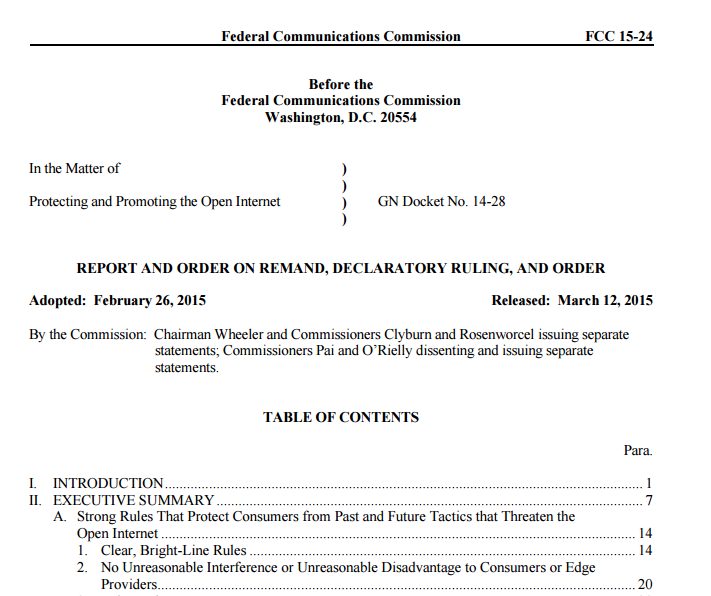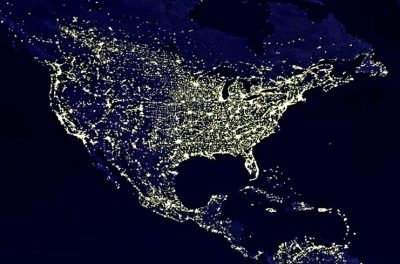Many, including myself, have been eagerly awaiting the infamous arrival of the Net Neutrality Document that was passed weeks ago by the FCC. The details came Thursday in the form of a 400 page document that included all the laws and regulations the FCC will be forcing on internet provides who now fall under the category of “telecommunications” thereby officially classifying them as a utility.
We all now know that Net Neutrality was created by the FCC (government) in order to fix a problem that didn’t exist and I quote: “Net Neutrality, A Solution That Doesn’t Work to a Problem That Doesn’t Exist.”
As a result this sparked fears among many internet users as to why such regulations were implemented behind our backs and how such regulations will impact them in the future.
Well now I have the answers! I have read through all the pages of Net Neutrality and in the video below I dive through it and expose what’s been hidden under the radar. To be frank, you many not like what I uncover, so just a forewarning…
Here are some quick highlights noted by PC world.com (Not all are listed, as there are many darker ones included in the video above):
— Broadband providers are prohibited from blocking or throttling legal Web traffic and from accepting payment to prioritize traffic. [Page 7.]
— The order justifies a “catch-all” standard against these potential broadband provider actions by quoting statesman Benjamin Franklin: “A little neglect may breed great mischief.” [Page 9, paragraph 21.]
— The FCC will also police future broadband practices. The commission will prohibit, on a case-by-case basis, “practices that unreasonably interfere with or unreasonably disadvantage the ability of consumers to reach the Internet content, services, and applications of their choosing or of edge providers to access consumers using the Internet.” [Page 59, paragraph 135.]
— The commission will allow broadband subscribers and Web companies to file complaints about net neutrality violations. A description of the complaint process runs from page 104 to 118.
— Broadband access is now a regulated telecommunications service, subject to some rules governing the traditional telephone network. [Page 10, paragraph 29.]
— The commission, however, will forebear from applying large parts of Title II of the Telecommunications Act, the portion of the law that covers regulated telecom services, to broadband providers. “This is Title II tailored for the 21st Century.” [Page 12.]
— The order does not apply the new rules to back-end interconnection agreements among ISPs, backbone providers and Web services like Netflix. It does however allow the commission to regulate those deals in the future. [Pages 10 and 11.] While the FCC has more than a decade of experience looking at last-mile broadband practices, it lacks a “similar depth of background in the Internet traffic exchange context.” [Page 11, paragraph 31.]
— Reasonable network management by broadband providers is allowed, but defined as a practice with a “primarily technical network management justification.” [Page 11, paragraph 32.]
— Mobile broadband is subject to the same net neutrality rules as fixed broadband. [Page 11, paragraph 34.]
— Mobile data plans that allow for sponsored data, for example, music downloads not counted against a data cap, are not prohibited by the order. The commission will address mobile data caps on a case-by-case basis. [Pages 66 to 68.]
— So-called specialized services that do not provide Internet access, including some VoIP services, online heart monitors and energy consumption sensors, are not covered by the rules. [Page 11. paragraph 35.]>>PCWorld.com

For More Information See:
Net Neutrality: http://transition.fcc.gov/Daily_Releases/Daily_Business/2015/db0312/FCC-15-24A1.pdf
Communication Act of 1934: http://transition.fcc.gov/Reports/1934new.pdf
Communication Act of 1996 (Amend): http://www.fs.fed.us/specialuses/commsites/documents/pl-104-104.pdf








